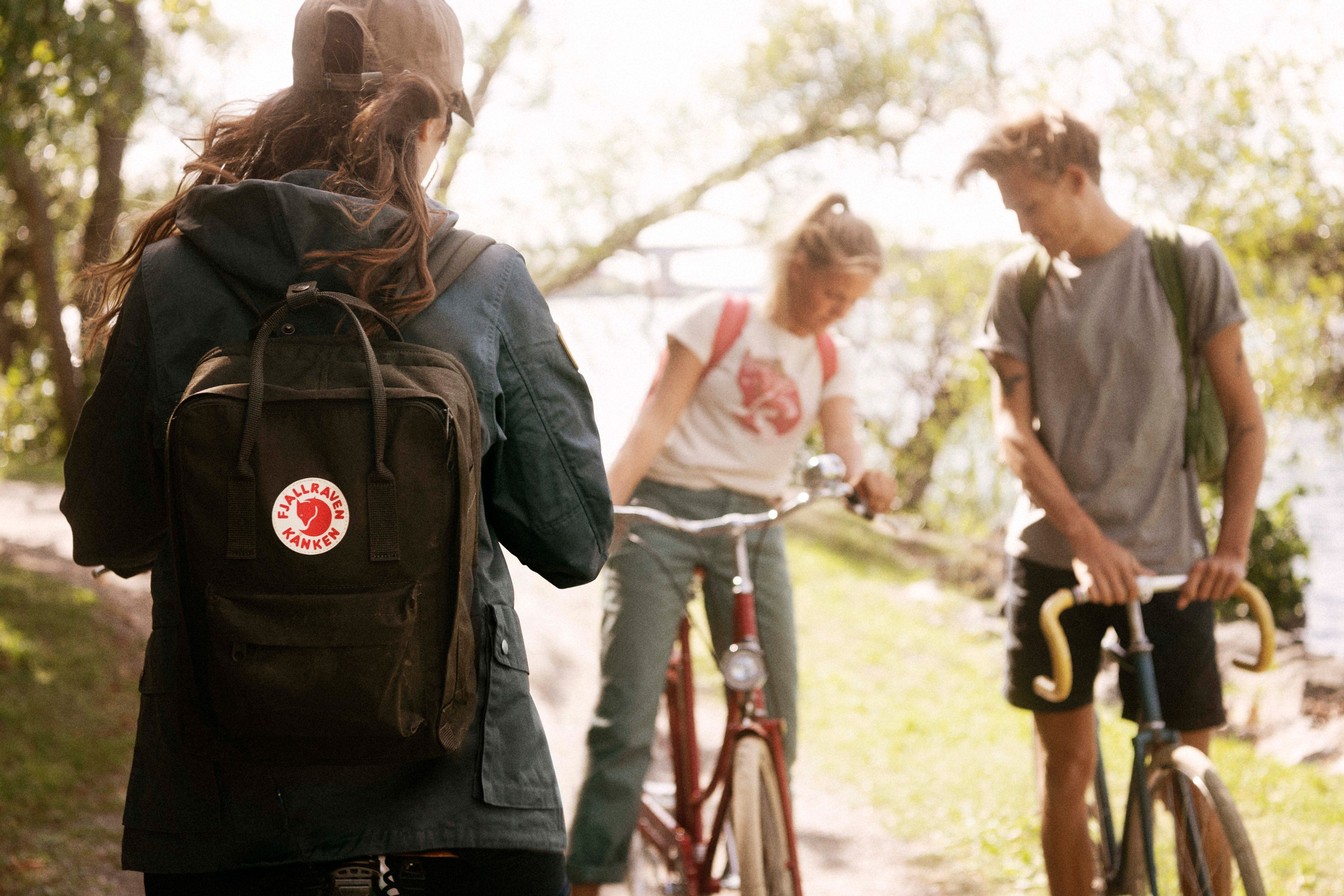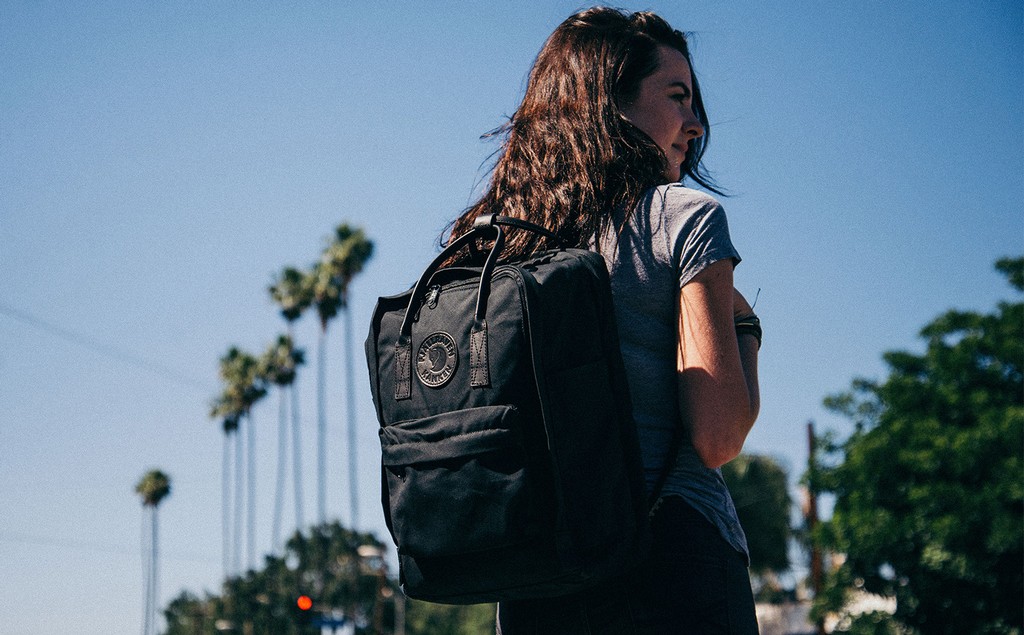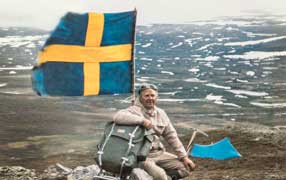Breadcrumbs navigation
Materials

Nature is our constant source of inspiration here at Fjällräven. And this extends to our material choice. Whenever possible we source materials directly from the environment around us. Materials like wool, cotton, and down. Failing this, we draw on ideas from nature to create synthetic materials to provide a specific solution to a unique challenge. Many of our materials are developed in-house, others with some of the best suppliers in the industry.
Kånken and Vinylon F
Vinylon F
Kånken wouldn’t be Kånken without Vinylon F. This synthetic fibre has been used to make the classic everyday backpack (and our Kajka trekking backpack, too) since the beginning, and its durability is clearly proven. Despite being a man-made fabric it functions like one created by nature. When Vinylon F fibres become damp they swell, making the weave tighter. So they resist rain showers without the need of a coating.

Kånken No. 2 and G-1000 Heavy Duty
G-1000 is tough, but G-1000 Heavy Duty goes a step further. Impregnated with Greenland Wax on both sides, it takes durability to a new level. This does mean it’s less ventilating than regular G-1000, so we use it for products where resilience, rather than airflow, is a priority. This translates to reinforcement materials – on places that are susceptible to extra hard wear – and for many of our bags and backpacks. Where smoothness is required, we use G-1000 Heavy Duty Eco S. It’s slightly lighter than the regular version, due to a finer weave, and it’s made from recycled polyester and organic cotton.
As part of our commitment to using more recycled and organic materials, we now have an Eco version – made from recycled polyester and organic cotton – of G-1000 Heavy Duty.

Recycled Polyester
Why use virgin polyester when you can use recycled polyester? Our recycled polyester comes from plastic PET bottles, unusable second-quality fabrics and fabric offcuts. By using fabrics already in circulation we reduce our use of raw materials, notably those that come from non-renewable sources. This has a knock-on effect: a reduction in air, water and soil contamination.
Organic Cotton
Cotton is an incredibly versatile natural material that’s been used to make clothes for thousands of years. It’s soft and comfortable, perfect for t-shirts and easy-going activities. At Fjällräven, we’ve always used long-fibre cotton of the highest quality. But cotton is a resource-intensive material. Under normal conditions, it requires lots of water, pesticides and fertilisers. This has negative effects on local biodiversity and the surrounding ecosystem. It even has knock-on effects on nearby communities.
So we’ve decided to phase out regular cotton and switch to organic cotton instead. The high-quality organic fibre is grown with less water (than regular cotton) and without the use of toxic pesticides and synthetic fertilisers. Our organic cotton producers are independently verified for their techniques and materials. Their methods support biodiversity and work towards improving soil quality.
Bergshell
Bergshell is a completely new fabric from Fjällräven which is extremely durable and completely waterproof (10 000mm white TPU laminate). At the same time, of course, it holds the high environmental standards that Fjällräven has, with 31% recycled nylon (from post-production) and a yarn process that halves the CO2 footprint. Creating a material with the highest possible abrasion resistance and also the highest possible tear strength in 100% nylon is not easy because it requires two completely different types of yarns.
